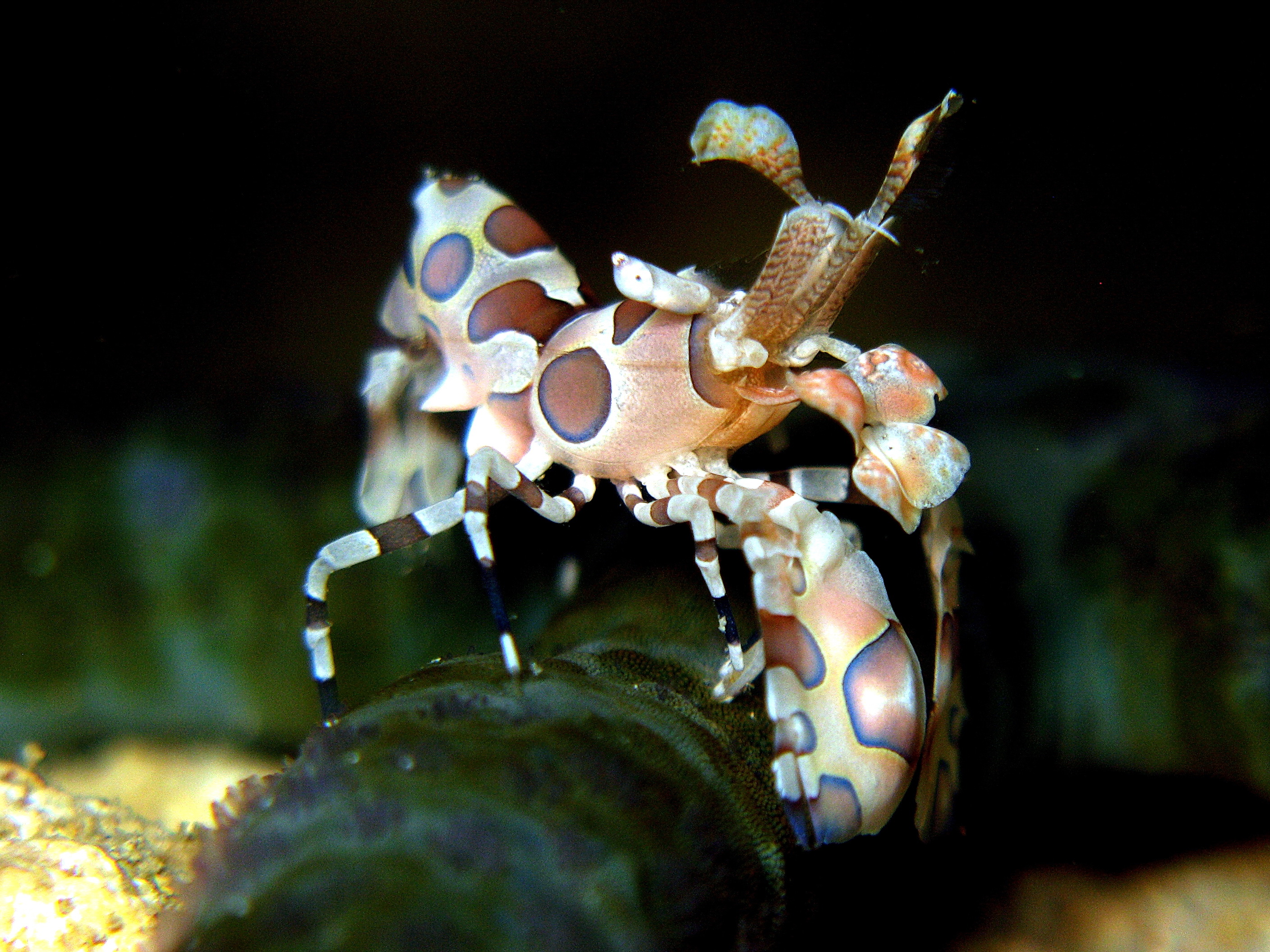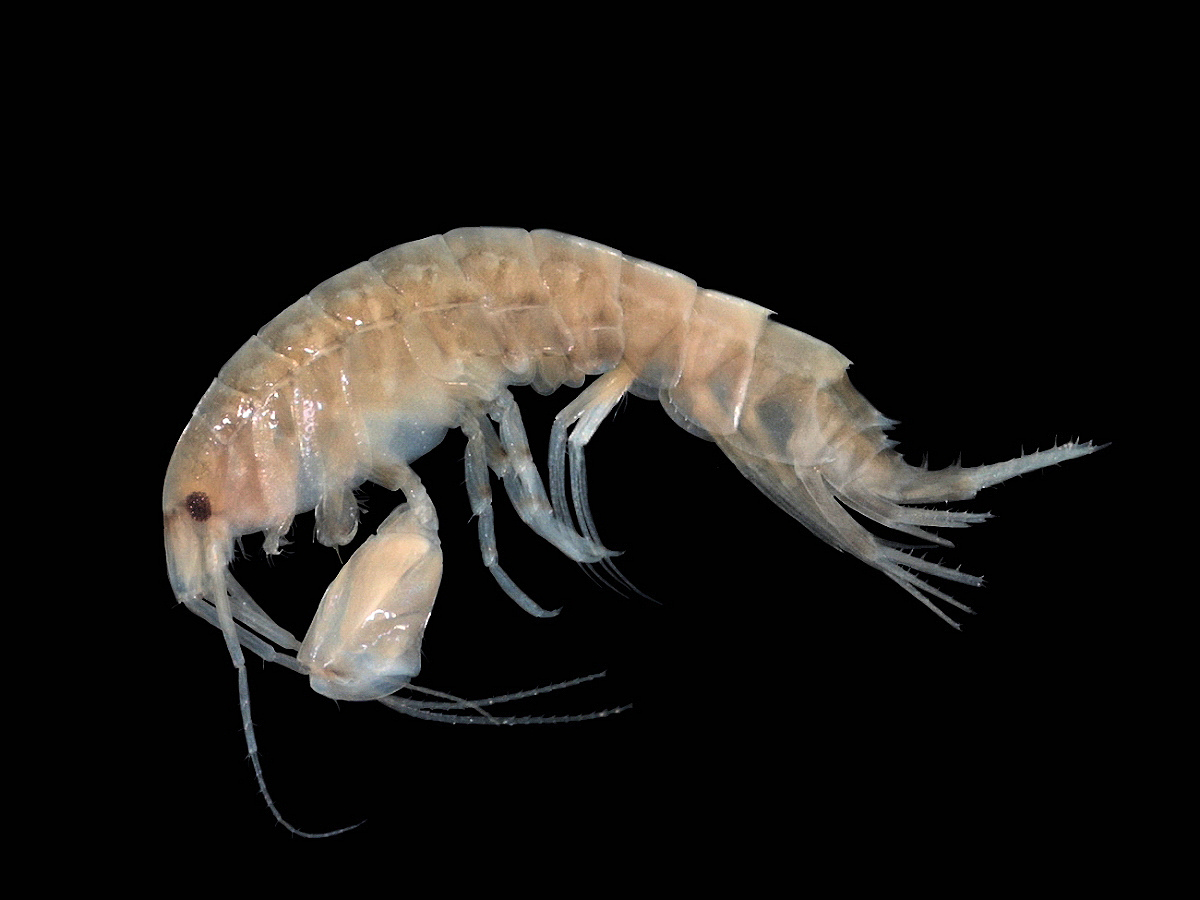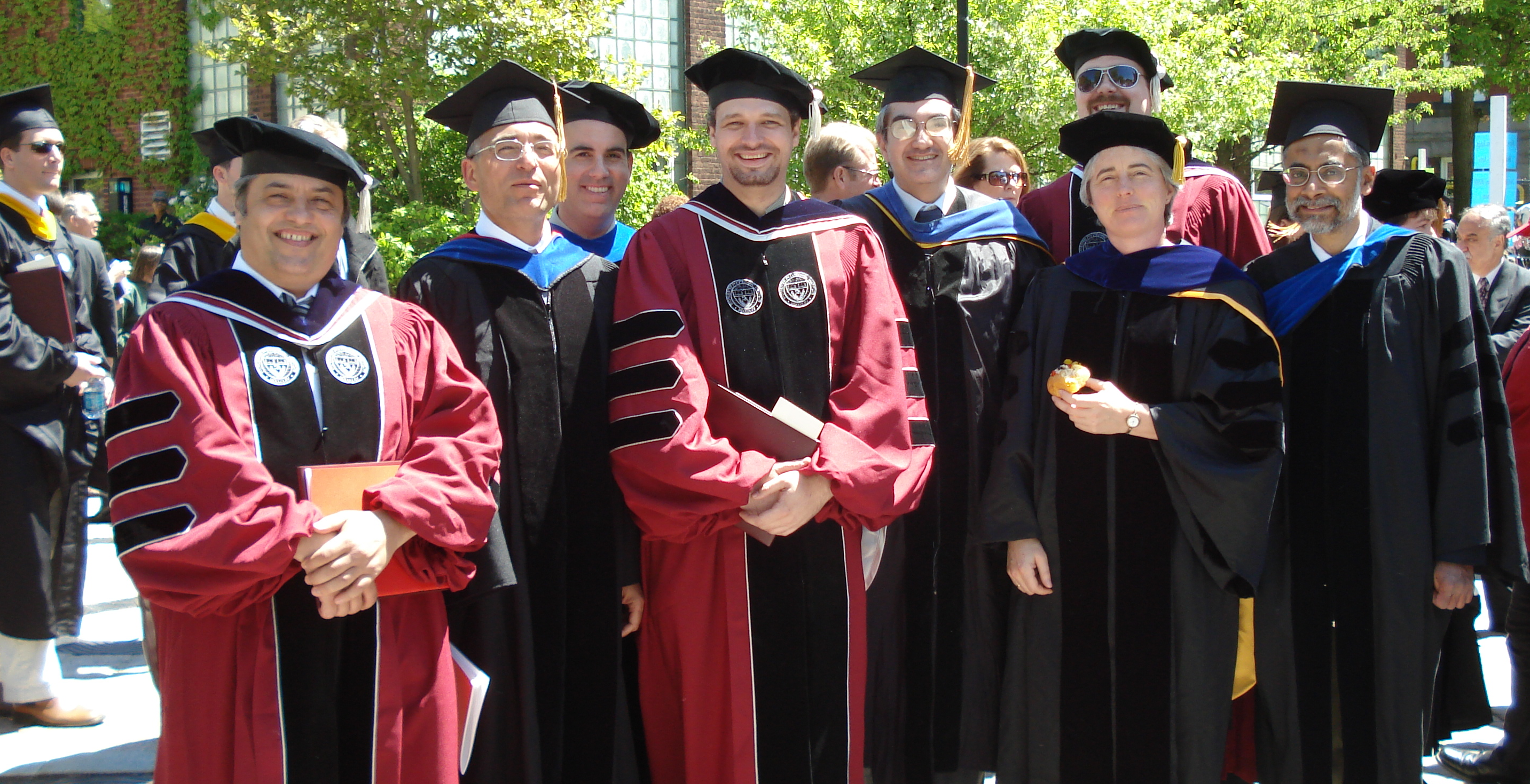|
Palaemon Antrorum
''Palaemon antrorum'', also known as the Balcones cave shrimp and the Texas cave shrimp, is a species of palaemonid shrimp endemic to Texas. It is listed as an endangered species on the IUCN Red List, and as a Species of Concern by the United States Endangered Species Act. The species' type locality is an artesian well on what is now the campus of Texas State University–San Marcos in San Marcos, Texas. It has also been reported from Edwards Aquifer west to Uvalde County. See also *Balcones Canyonlands National Wildlife Refuge *Edwards Plateau The Edwards Plateau is a geographic region forming the crossroads of Central, South and West Texas, United States. It is named in honor of Haden Edwards. It is bounded by the Balcones Fault to the south and east; the Llano Uplift and the Lla ... References Palaemonidae Crustaceans of the United States Freshwater crustaceans of North America Crustaceans described in 1896 Taxonomy articles created by Polbot Cave shrimp [...More Info...] [...Related Items...] OR: [Wikipedia] [Google] [Baidu] |
Palaemonidae
Palaemonidae is a family of shrimp in the order Decapoda. Many species are carnivores that eat small invertebrates, and can be found in any aquatic habitat except the deep sea. One significant genus is '' Macrobrachium'', which contains commercially fished species. Others inhabit coral reefs, where they associate with certain invertebrates, such as sponges, cnidarians, mollusks, and echinoderms, as cleaner shrimps, parasites, or commensals. They generally feed on detritus, though some are carnivores and hunt tiny animals. The family contains more than 1200 species in 160 genera. The genera were formerly split into two subfamilies, but in 2015, molecular and morphological research determined that the subfamily groupings were invalid. At the same time, the members of the families Gnathophyllidae and Hymenoceridae were incorporated into the Palaemonidae. Genera The following genera are recognised: *'' Actinimenes'' *'' Alburnia'' *'' Allopontonia'' *'' Altopontonia'' *'' ... [...More Info...] [...Related Items...] OR: [Wikipedia] [Google] [Baidu] |
Texas Tech University
Texas Tech University (Texas Tech, Tech, or TTU) is a public university, public research university in Lubbock, Texas, United States. Established on February 10, 1923, and called Texas Technological College until 1969, it is the flagship institution of the five-institution Texas Tech University System. As of fall 2024, the university enrolled 40,969 students, making it the List of universities in Texas by enrollment, sixth-largest university in Texas. Over 25% of its undergraduate student population identifies as Hispanic and Latino Americans, Hispanic, so the university has been designated a Hispanic-serving institution (HSI). The university offers degrees in more than 150 courses of study through 13 colleges and hosts 55 research centers and institutes. Texas Tech University has awarded nearly 325,000 degrees since 1927, including over 75,000 graduate and professional degrees. It is Carnegie Classification of Institutions of Higher Education, classified among "R1: Doctora ... [...More Info...] [...Related Items...] OR: [Wikipedia] [Google] [Baidu] |
Crustaceans Described In 1896
Crustaceans (from Latin meaning: "those with shells" or "crusted ones") are invertebrate animals that constitute one group of arthropods that are traditionally a part of the subphylum Crustacea (), a large, diverse group of mainly aquatic arthropods including decapods (shrimps, prawns, crabs, lobsters and crayfish), seed shrimp, branchiopods, fish lice, krill, remipedes, isopods, barnacles, copepods, opossum shrimps, amphipods and mantis shrimp. The crustacean group can be treated as a subphylum under the clade Mandibulata. It is now well accepted that the hexapods (insects and entognathans) emerged deep in the Crustacean group, with the completed pan-group referred to as Pancrustacea. The three classes Cephalocarida, Branchiopoda and Remipedia are more closely related to the hexapods than they are to any of the other crustaceans (oligostracans and multicrustaceans). The 67,000 described species range in size from ''Stygotantulus stocki'' at , to the Japanese spider crab with a ... [...More Info...] [...Related Items...] OR: [Wikipedia] [Google] [Baidu] |
Freshwater Crustaceans Of North America
Fresh water or freshwater is any naturally occurring liquid or frozen water containing low concentrations of dissolved salts and other total dissolved solids. The term excludes seawater and brackish water, but it does include non-salty mineral-rich waters, such as chalybeate springs. Fresh water may encompass frozen and meltwater in ice sheets, ice caps, glaciers, snowfields and icebergs, natural precipitations such as rainfall, snowfall, hail/ sleet and graupel, and surface runoffs that form inland bodies of water such as wetlands, ponds, lakes, rivers, streams, as well as groundwater contained in aquifers, subterranean rivers and lakes. Water is critical to the survival of all living organisms. Many organisms can thrive on salt water, but the great majority of vascular plants and most insects, amphibians, reptiles, mammals and birds need fresh water to survive. Fresh water is the water resource that is of the most and immediate use to humans. Fresh water is not always pot ... [...More Info...] [...Related Items...] OR: [Wikipedia] [Google] [Baidu] |
Crustaceans Of The United States
Crustaceans (from Latin meaning: "those with shells" or "crusted ones") are invertebrate animals that constitute one group of Arthropod, arthropods that are traditionally a part of the subphylum Crustacea (), a large, diverse group of mainly aquatic animal, aquatic arthropods including decapoda, decapods (shrimps, prawns, crabs, lobsters and crayfish), ostracoda, seed shrimp, branchiopoda, branchiopods, argulidae, fish lice, krill, remipedes, isopods, barnacles, copepods, Mysida, opossum shrimps, amphipods and mantis shrimp. The crustacean group can be treated as a subphylum under the clade Mandibulata. It is now well accepted that the Hexapoda, hexapods (insects and entognathans) emerged deep in the Crustacean group, with the completed pan-group referred to as Pancrustacea. The three classes Cephalocarida, Branchiopoda and Remipedia are more closely related to the hexapods than they are to any of the other crustaceans (oligostracans and multicrustaceans). The 67,000 described spec ... [...More Info...] [...Related Items...] OR: [Wikipedia] [Google] [Baidu] |
Edwards Plateau
The Edwards Plateau is a geographic region forming the crossroads of Central, South and West Texas, United States. It is named in honor of Haden Edwards. It is bounded by the Balcones Fault to the south and east; the Llano Uplift and the Llano Estacado to the north; and the Pecos River and Chihuahuan Desert to the west. San Angelo, Austin, San Antonio and Del Rio roughly outline the area. The plateau, especially its southeast portion, is also known as the Texas Hill Country. Natural history The bedrock consists primarily of limestone, with elevations ranging between 100 and 3000 ft. Caves are numerous. The landscape of the plateau is mostly savanna scattered with trees. It mostly lacks deep soil suitable for farming, though the soil type is fertile mollisol, so some cotton, grain sorghum, and oats are grown. For the most part, though, the thin soil and rough terrain areas are primarily grazing regions, with cattle, sheep, and goats ( Angora and meat types) predom ... [...More Info...] [...Related Items...] OR: [Wikipedia] [Google] [Baidu] |
Balcones Canyonlands National Wildlife Refuge
Balcones Canyonlands is a national wildlife refuge located in the Texas Hill Country to the northwest of Lago Vista, Texas. The refuge was formed in 1992 to conserve habitat for two endangered songbirds, the golden-cheeked warbler (''Setophaga chrysoparia'') and the black-capped vireo (''Vireo atricapilla''), and to preserve Texas Hill Country habitat for numerous other wildlife species. The refuge augments a similarly named preserve in Austin called the Balcones Canyonlands Preserve. The refuge is located within a deeply dissected portion of the Edwards Plateau that contains many steep-banked streams and canyons. The canyons facing Austin are deeply etched into the limestone of the Edwards Plateau by tributaries of the Colorado River. Beneath the surface of the Edwards Plateau lies an underground labyrinth of caves, sinkholes, and springs. Various spiders, beetles, and other creatures inhabit this below-ground world, and are unique to this area of Texas. Even deeper b ... [...More Info...] [...Related Items...] OR: [Wikipedia] [Google] [Baidu] |
Uvalde County, Texas
Uvalde County ( ; ) is a county located in the U.S. state of Texas. As of the 2020 census, its population was 24,564. Its county seat is Uvalde. The county was created in 1850 and organized in 1856. It is named for Juan de Ugalde, the Spanish governor of Coahuila. Uvalde County was founded by Reading Wood Black, who also founded the city of Uvalde, Texas. Uvalde County comprises the Uvalde, TX Micropolitan Statistical Area. History Native Americans Artifacts establish human habitation dating back to 7000 B.C. Evidence of a permanent Indian village on the Leona River at a place south of the Fort Inge site is indicated in the written accounts of Fernando del Bosque's exploration in 1675. Comanche, Tonkawa, Seminole and Lipan Apache continued hunting and raiding settlers into the 19th century. Texas State Historical Association Early explorations On January 9, 1790, Juan de Ugalde, governor of Coahuila and commandant of the Provincias Internas, led 600 men to a decisiv ... [...More Info...] [...Related Items...] OR: [Wikipedia] [Google] [Baidu] |
Edwards Aquifer
The Edwards Aquifer is one of the most prolific artesian aquifers in the world. Located on the eastern edge of the Edwards Plateau in the U.S. state of Texas, it is the source of drinking water for two million people, and is the primary water supply for agriculture and industry in the aquifer's region. Additionally, the Edwards Aquifer feeds the Comal River, Comal and San Marcos Springs, provides springflow for recreational and downstream uses in the Nueces River, Nueces, San Antonio River, San Antonio, Guadalupe River (Texas), Guadalupe, and San Marcos River, San Marcos river basins, and is home to several unique and endangered species. Basin characteristics Geography Located in South Central Texas, the Edwards Aquifer encompasses an area of approximately that extends into parts of 11 counties. The aquifer's boundaries begin at the groundwater divide in Kinney County, East of Brackettville, and extend Eastward through the San Antonio area and then Northeast where the aquif ... [...More Info...] [...Related Items...] OR: [Wikipedia] [Google] [Baidu] |
Doctor Of Philosophy
A Doctor of Philosophy (PhD, DPhil; or ) is a terminal degree that usually denotes the highest level of academic achievement in a given discipline and is awarded following a course of Postgraduate education, graduate study and original research. The name of the degree is most often abbreviated PhD (or, at times, as Ph.D. in North American English, North America), pronounced as three separate letters ( ). The University of Oxford uses the alternative abbreviation "DPhil". PhDs are awarded for programs across the whole breadth of academic fields. Since it is an earned research degree, those studying for a PhD are required to produce original research that expands the boundaries of knowledge, normally in the form of a Thesis, dissertation, and, in some cases, defend their work before a panel of other experts in the field. In many fields, the completion of a PhD is typically required for employment as a university professor, researcher, or scientist. Definition In the context o ... [...More Info...] [...Related Items...] OR: [Wikipedia] [Google] [Baidu] |
San Marcos, Texas
San Marcos () is a city and the county seat of Hays County, Texas, United States. The city is a part of the Greater Austin, Greater Austin Metropolitan Area. San Marcos's limits extend into Caldwell County, Texas, Caldwell and Guadalupe County, Texas, Guadalupe County (United States), counties, as well. San Marcos is on the Interstate 35 in Texas, Interstate 35 corridor between Austin, Texas, Austin and San Antonio. Its population was 44,894 at the 2010 United States Census, 2010 census and 67,553 at the 2020 United States census, 2020 census. Founded on the banks of the San Marcos River, the area is thought to be among the oldest continuously inhabited sites in the Americas. San Marcos is home to Texas State University and the Meadows Center for Water and the Environment."Meadows Center for Water ... [...More Info...] [...Related Items...] OR: [Wikipedia] [Google] [Baidu] |
Shrimp
A shrimp (: shrimp (American English, US) or shrimps (British English, UK)) is a crustacean with an elongated body and a primarily Aquatic locomotion, swimming mode of locomotion – typically Decapods belonging to the Caridea or Dendrobranchiata, although some Shrimp#Non-decapods, crustaceans outside of this order are also referred to as "shrimp". Any small crustacean may also be referred to as "shrimp", regardless of resemblance. More narrow definitions may be restricted to Caridea, to smaller species of either of the aforementioned groups, or only the Marine life, marine species. Under a broader definition, ''shrimp'' may be synonymous with prawn, covering stalk-eyed swimming crustaceans with long, narrow muscular tails (Abdomen#Arthropoda, abdomens), long whiskers (Antenna (biology), antennae), and slender, Biramous, biramous legs. They swim forward by paddling the swimmerets on the underside of their abdomens, although their escape response is typically repeated flicks wit ... [...More Info...] [...Related Items...] OR: [Wikipedia] [Google] [Baidu] |









